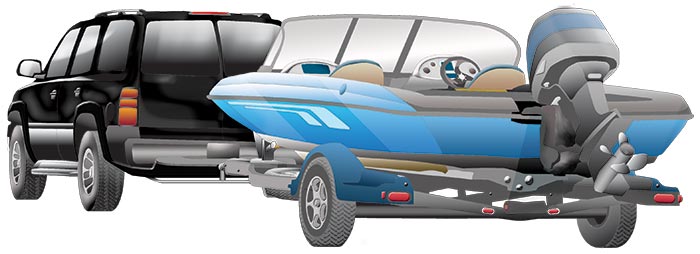Advertisement
A good rinse in fresh water protects your investment and helps defend against invasives.

Ridding your boat of salt isn't the only reason to spray the hull and trailer. Aquatic nuisance species, also called "invasives," are a threat to lakes and rivers. In a sentence, these are plants, fish, and crustaceans that aren't native to your local waters but have taken up residence, anyway, disrupting food sources, out-competing native aquatic species, and clogging municipal water intakes. Depending on where you boat, you may have invasive species inspectors on duty at your local ramp. Many boat ramps in Minnesota have inspection stations and if an invasive is found, the boater is required to go through a "decontamination wash" with high-powered, hot water sprays to remove the "hitchhikers" as they are often called.
Inspect Everything
Take the anchor, anchor line, docklines, and other gear out of the boat. Spray thoroughly. Lake Havasu, Arizona, inspectors say a majority of the small snails/mussels on trailer boats are found here.
Leave the Critters Behind
Live wells with water from a lake need to be emptied back into the same lake. Don't transport live well water from one body of water to another.
3 Words To Remember When Ridding Your Rig Of Critters
Clean
Remove visible vegetation and any mud from the hull, motor, and trailer. Rinse the boat with high-pressure water.
Drain
Pull the drain plug before hitting the road. Also drain all live wells.
Dry
Allow the boat to dry out as much as possible between boating in different water bodies. Leave hatches and live well lids open when practical. Ideally, the boat needs at least five days to dry before launching in another body of water. If you are returning to your usual spot, there's no need to wait.
Get Spraying
Spray the trailer, the outdrives of the engine, prop, intakes, bilge, trim tabs, and docklines.
Tip
Give Your Brakes a Break
If your trailer has drum brakes, it makes sense to invest in a flush kit (it attaches to the brake cluster backing plate) that has a connection for your garden hose. There are flush kits for disc brakes, too, but most are for use with drum. If you don't have a flush kit, spray the trailer hub (the brakes are there) with the garden hose.
Flush your outboard, too, using muffs and a garden hose.
Tip
Shake the Salt Out
Rinsing your trailer and boat after a day on the water is important. Saltwater will corrode metal parts faster than freshwater, so even if you have an aluminum trailer that was bought because it won't corrode, inspect fixtures (bolts, nuts, or hangers for leaf springs) that may not be aluminum.
This is true if your trailer frame is hot-dipped galvanized steel, too. Any small nick on the trailer frame opens the door to corrosion, even in freshwater. It's important to inspect the frame from time to time.
Some boaters will stop at a car wash on the way home from the boat ramp and make use of a handheld sprayer to get rid of salt and grime. Otherwise, it can be done at home so long as it's done within a few hours of leaving the boat ramp.
